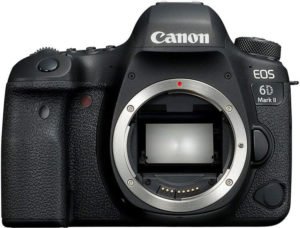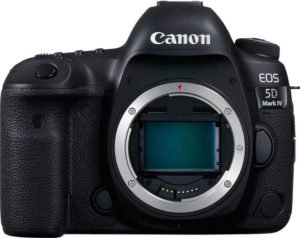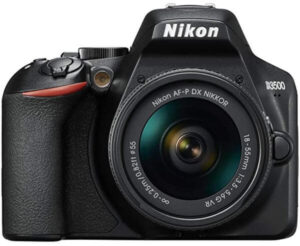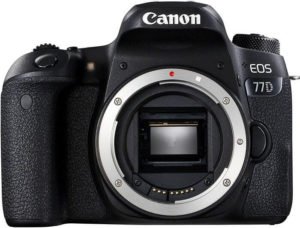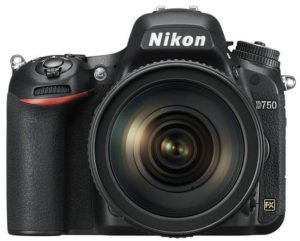How to choose your DSLR? Finding the best DSLR camera for yourself
Last update: 04/19/2024
Our blog continues to grow thanks to you, our readers. This post may contain affiliate links, which means we can earn a small commission if you make a purchase through them, at no extra cost to you. This helps us to continue to bring you more and support our work!
In a world where digital photography has been evolving at an incredible speed, many people are wondering about buying their first DSLR camera to start photography. The subject is becoming more and more popular today and many people are wondering how to choose their DSLR or what is the best DSLR for them? If you have already made your purchase, you can also look at the article to find out which camera lens to choose.
As you might understand, there is no “top” DSLR for everyone. In my opinion, it will be the most suitable DSLR for you, the one that will be the most convenient for you. That’s corresponds more to your desires, your needs, your photographic practice, your commitment to photography, and above all, most often, your budget. It would not necessarily be useful to start by buying a pro DSLR (5d mark iv or iii) when you can start with a cheap DSLR to get your foot on the ground….
And yes, because photography also means money and those, like me, who have been taking pictures for a few years know that, to a certain point, photography can be expensive. This article will not offer you a comparison of the best DSLRs of the moment, but I will guide you in the choice of your digital DSLR, by explaining the elements you need to know to make the right choice, the one that will suit you the best.
Choosing your camera is not easy and I will give you at the end of the article, a selection of the best DSLRs according to your budget and your photography needs. This article will be updated every year, to include the latest cameras. Who said learning photography was easy, huh?
For those who are interested in choosing another type of camera, I suggest you read the complete article I wrote about the best mirrorless cameras. I know that some people swear by these famous mirrorless with interchangeable lenses and a stabilizer for sharpness. A perfect combo for those looking for a good compact and lightweight camera.
As Amazon Associates, we earn from qualifying purchases. It means that, all the links linking to camera gear in this post are redirecting to Amazon stores
How to choose your DSLR camera?
As mentioned at the beginning, the objective is not to give you here an exhaustive list of the best DSLRs at the moment. There are too many parameters to be considered to be able to answer this question properly. Do you necessarily think that a 2000$ flat screen is the best for everyone? Not so sure, I don’t even own a television, but you get the idea, right?

Here are, in my opinion, the elements to know and have in mind when buying your digital DSLR camera, whether it is your first or not. You will notice that I briefly explain the different elements in the paragraphs below. You can also find out more by clicking on the small arrow to get a few more details.
Keep in mind in any case that you must choose according to your needs in photography (and also your desires… if you have some more money)…
The size of the digital sensor on your DSLR: APS-C / Full Frame
This will be the subject of a more detailed and complete article, so I’ll try to summarize it as simply as possible here. When you buy a DSLR, you have two possible sensor sizes (excluding medium format and mTF). The sensor is simply the surface of your DSLR camera that will capture the light from the scene in front of you. To generalize this (deliberately excluding the APS-H format), there are APS-C sensors and Full Frame sensors (also known as “35 mm format (36 mm × 24 mm)”).
To go even further, don’t hesitate to have a look at our complete article detailing all the Canon APS-C cameras of the moment.
For more information:
Here is some additional information on both types of sensors. There are therefore:
- Full Frame, also known as 24×36 sensors. To simplify, remember that the Full Frame sensor:
- Is larger and has better noise management (which appears in long exposures or in low light conditions / when using high ISO). If you like long exposure photography this is good to take into account in my opinion,
- Is much more expensive (and much heavier) than an APS-C sensor,
- The lenses for a Full Frame body are more expensive,
- Full Frame sensors are generally designed for high-end DSLR cameras,
- A tropicalization system is always more or less present,
- The quality of the background blur (bokeh) is known to be better,
- The depth of field is shorter (with identical setting and framing) on a full-frame sensor, so the backgrounds are ” blurrier “.
- APS-C sensors, which have smaller dimensions compared to the Full-Frame (16×24). Remember that the APS-C sensor:
- Is smaller than the Full-Frame sensor (1.5 to 1.6 times -> conversion factor),
- Is found on most entry-level and mid-range DSLRs,
- The image “is zoomed” in compared to a Full Frame (shot at the same place, an 18mm shot image will have a smaller angle of view than a 24×36). An ultra wide angle will therefore be less wide on a APS-C than on a Full-Frame.
- They are very efficient and have the major benefit of being able to see “further” (e.g.: travel photos where a zoom will be necessary -> you zoom further to make a long story short). A focal length of 200mm is equivalent to a 320mm on an APS-C body.
- The lenses are more affordable.
The associated lenses of your digital camera
This is an important point to consider when purchasing your DSLR. Indeed, depending on the body you are going to buy (mainly related to the choice Full Frame or APS-C), the lenses will not be the same. I see two points that need to be clarified here: the choice of lens mount and the weight/price of the lens.
When choosing the mount, remember the following, each brand has a specific acronym to indicate compatibility with a full frame DSLR or APS-C DSLR. For example, for a Canon lens, EF-S is dedicated to APS-C cameras and Canon EF to Full Frame cameras. At Nikon, they use the acronym FX when it is compatible with Full Frame. As a general rule, a lens for a Full Frame will always be compatible with an APS-C body. The opposite is almost never true, at Canon at least. It was pointed out to me (thanks Alex), that with other brands, notably Nikon, it was theoretically possible to fit a lens dedicated to APS-C on a Full Frame body, some bodies automatically resize the image to adapt it to your full Frame. However, the interest is clearly lost in owning such a body, but it is possible!
Regarding the weight and price of the lenses, it is important to know that the lenses dedicated to Full Frame are much more expensive. To start with a Full-Frame, you clearly need money! Not to mention the fact that the lenses will generally be much heavier, especially those with a wide aperture… At the beginning you will probably start with a Trans-standard zoom (18-55mm type) without a fixed focal length (35mm or 50mm). I would still advise you to use a stabilized lens if you can.
To find out what type of camera to consider, you can also think about the pictures you want to shoot. If you like to be able to take beautiful images at a distance, the APS-C format may be more suitable. For example, a 300mm on a Full frame (as in my case) remains a 300mm. You only need to “buy” a 200mm on an APS-C format to have about the same angle of view.

The Canon 50 mm f/1.4, a bright lens of high quality at a low price (or almost) – More details on Amazon
The brands of the new camera
Everyone will have their own opinion on this matter, but you can remember the following elements:
- The two most famous and popular brands are Canon and Nikon,
- Other brands stand out from the crowd such as Sony, Panasonic or Olympus,
- There are no better brands, we all agree. Canon DSLRs are no better than Nikon DSLRs and vice versa (even if I am a Canonist),
- The number of available lenses is bigger at Canon and Nikon anyway!
- Lenses from third party brands (Sigma, Tamron, Zeiss, etc.) are available for Canon/Nikon mounts, while this is less true for other brands. Generally, Sony DSLR, Pentax DSLR and others, have less choice in this area….
So I don’t recommend for you to go more towards one brand than another, but according to your ideal photo practice, you should first look at whether the brand has the quality lenses you require (macrophotography or wildlife photography).
Technical criteria for choosing your DSLR camera
Here are some technical criteria that I think you need to know in order to choose a camera properly, especially for a first camera. The idea is to understand your needs, because honestly no one really needs to begin with a 36 million-pixel camera, a 15 frames per second burst and 75 cross collimators… Yet some cameras offer all this… You see where I’m going with this? Think carefully about what you want to shoot to make the “right choice”. The first camera is important in my opinion. You will then be able to progress….

Camera resolution
This is simply the “number of pixels” (length/width) per unit of measurement (dpi). For years, there was a megapixel rush, which was just a great marketing hit. Here are some facts to remember:
- The number of pixels has only a small impact on the final quality of the image (I promise),
- A camera with 8 to 10 million pixels is more than enough to produce images that can be displayed in full screen on a computer. You can take beautiful pictures with a phone, of course, but only if the final objective is to look at them on a small screen, or a very small print. I’ve already tried to print pictures taken with my old iPhone, it’s very ugly…
- Where the number of pixels can play a significant role is by allowing the possibility to crop a photo. Simply put, the more pixels you have, the more you will be able to reframe it while keeping a good image quality.
- Another important point is the impression of the images. The more pixels you have, the more you can print an image in large format of good quality. Commercial photographers often use a 36 million pixels or higher camera body. But between us, do you often print posters of your holiday photos?
ISOs in photography
ISO, or ISO sensitivity is your camera’s ability to capture light. It ranges from ISO 50 to more than ISO 100 000! (We are talking about low and high sensitivity). In other words, it makes it easier for you to take pictures in low-light conditions. I also wrote a detailed article on ISO in photography in the “Basics of Photography” section.
Learn more about ISO sensitivity:
To summarize, remember the following points. A body with the availability to raise the ISO allows you to:
- Shoot in poor light conditions (animal in the undergrowth, indoors or in concert, etc.),
- Shoot faster under specific conditions (when doubling ISO, or doubling the shutter speed). In particular, for sports photography,
- To limit the risk of motion blur when there is no light (you can increase the speed),
- To more easily use long focal lengths (you will rarely lack speed if you are using high ISO).
However, keep in mind that:
- High ISO makes the image more grainy (unaesthetic effect),
- APS-C body generally can’t raise the ISO as much and have a worse noise management in comparison to the Full Frame sensor.
- This is partly related to the size of the sensor (larger in 24×36) and the size of the photosites on the sensor (I will talk about it another time),
- Full Frame bodies are therefore much more expensive, especially for this aspect (but many others too).
3 different Canon body types with poor ISO management (On the left, the Canon EOS 2000D (Rebel T7) – very affordable entry level), very good management (in the middle the Canon 90D – amateur model) and very good management (on the right, the Canon 5D Mark IV, professional body)
Autofocus points
The autofocus points are actually the “areas” you see in the viewfinder that you use to focus on a specific subject. Even if you do not need 50 AF points to begin in photography, this is something to consider, especially for wildlife photographers or sports photographers. Remember that depending on the bodies:
- The number of focus point varies widely. It can go from 11 (as on my 6D) to 65, as on the new 7D Mark II. Their number but most importantly their location on the screen has a major influence on the creativity and focus possibilities. For instance, my 6D has autofocus points that are far too central for me and this made it difficult when I needed to frame in a specific way during my photo safari in Tanzania.
- Their quality also differs a lot. Without going into too many technical details, remember that there are several types of autofocus points, more or less sensitive to the light of the scene. Simply put, some AF points will be very good focus your subject in low light. With others (often off-centered on the screen), you won’t even make it!
- The quality of the AF points therefore affects the autofocus (the focus you get when you press the shutter button halfway down).


Burst mode
It is simply a mode that allows you to take pictures very quickly in a very short period of time. When choosing your camera, it should be considered. This is particularly interesting when you want to capture a subject that moves quickly (plane, animal, sports photography, etc.). The burst mode rate varies depending on the camera. As a general rule, the more expensive a body you have (Full Frame), the higher the speed rate will be. Today, professional cameras (Canon 1D type), have a frame rate of 14 frames per second.
Weight and size: space and compacity
These are two very important elements to consider when buying a DSLR camera. However, there is a good chance that if you’re starting out in photography and that this is your first DSLR, you will buy an entry-level DSLR, so small and light.
However, if, like me, you wanted to enjoy yourself more from the beginning and buy a better camera, these points should be taken into account. To compare: a beginner DSLR camera, type Canon 100D, weighs only 400g (a small camera). My 6D already weighs almost 700g, and a Canon 1D (pro equipment) 1.4 Kg. So, is it too heavy for you?
Just keep in mind that in addition to the weight of the body, you will add a lens that will also weigh. With my 6D + 70-300 L (telephoto lens), I have 2 kg around my neck. It starts to get heavy at the end of the day, believe me! With lighter lenses, the weight will obviously decrease. Would you like to know more about the wide-angle lens?
Another point: camera accessories. If I want to buy a pro or semi-pro camera one day, there is a good chance that I will have to change my camera bag. If you combine a polarizing filter, ND filter, degraded filter, tripod, a teleconverter, several lenses, it will all take up space… Do you want to have all this stuff on you or not?

Ergonomics and handling
I recommend that you go to a store to test your future DSLR camera. You don’t have to go to a local store (where it will often be more expensive) to buy it, but rather to test it.
Just check out the camera, the menus, the camera settings. Take it in your hand and see how you feel. This is important.
These are, in my opinion, the important technical points to understand in order to know how to choose your DSLR, the best DSLR for you.
Budget
Last but not least, the budget you have for your DSLR acquisition. For many of us, this is surely the most important point and the one that will be most important for you. Do you have a limited budget? 500$? 1000$? 2000$? Depending on your situation, you will already be able to make a first selection, if only on the basis of this criteria.
In general, there are 3 categories:
- Beginner – entry-level
- Amateur
- Professional
Unless you are wealthy, I wouldn’t recommend starting with a professional DSLR camera, which will be all the more difficult to handle. I’m not even talking about the price of all the lenses you’re going to buy. The first prices for low-end DSLR cameras start from 200$. A professional photographer is worth more than 3000/4000$!
But this article is not only for people who want to buy their first DSLR. Some of you have already made the first purchase and want to upgrade to better camera equipment, something more versatile, more complete, more powerful, more adapted to their photo practice.
The best DSLR camera for you? My selection

This is a difficult exercise, at the end of this article, to suggest your best DSLR based on all the above-mentioned elements. The choice is not perfect and the suggestions will not be perfect either, but I think I have oriented you with all the parameters you need to know.
I will mainly focus on entry-level or amateur ranges, i.e. APS-C sensor. People who want to buy a professional DSLR are already aware of all these elements.
The best DSLR camera for beginners / How to choose your DSLR when you start
- If you are a beginner and have not really identified your needs and what photography you want to practice, I recommend that you stick to an entry-level/beginner camera, regardless of the brand. You can control your budget to as low as 250€ for your DSLR + kit lens type 18-55mm which allows you to do a little bit of all types of photos. This is the minimum budget and it can work very well to begin with, to get the feel if we like it or not.
- You can start for example with a Canon Rebel T100/4000D, or a Nikon D3300,
- If you still don’t know what photos you want to take but you have a slightly larger budget, say 500€, you can upgrade:
- Towards a Nikon D3500, Canon EOS Rebel SL3/250D,
- Here are the possibilities of DSLR + kit lens at less than 500€
- For those who have a larger budget and want to have a good time for their first DSLR, you can consider upgrading to the top of the beginner or amateur range, but the budget will soon increase very significantly. Count between 500 and 800$ approximately for the body + lens kit:
- You can consider a Canon Rebel T7i/800D, a Nikon D5600 or a Pentax K-70 for example,
Between you and me, we don’t need the best DSLR camera to start photography! Two examples of entry-level cameras (Canon 2000D and Nikon D3100) that are very good to start learning photography
The best DSLR - if you have identified your needs
If you are a beginner but already have an idea of your future photography practice, choosing the body (and its lens) may be easier in part.
- For those who wants to do sport or wildlife photography, a camera with a high ISO management, a fast burst rate and a fast autofocus will be necessary. You can go with a Canon Rebel T7i/800D, or if you have the money to buy a 6D (first full frame at “low price”, for 1000€). At Nikon a D7200 would already be a very good investment for these types of photos.
- If you are more interested in landscape photography, you have two main options depending on your budget:
- You can choose an entry-level camera body with the 18-55mm kit, the first choice of DSLRs for many, available from 300€. You can already take beautiful landscape pictures with an 18mm, and you will have the advantage of being able to zoom in a bit to 55mm,
- For those with a larger budget, you can consider buying an entry-level or amateur camera and choosing, for example, a lens adapted for landscape photography, a wide angle for APS-C. Depending on the price of the body, the whole can cost between 700 and 1000€. For examples of wide angle: at Canon the excellent EF-S 10-22mm, the Nikon DX 10-24 f/3.5-4.5. You also have wide-angle lenses from third party brands (be careful of the mount) that are very well known in APS-C: the Tokina AT-X 11- 20 mm f/2.8 Pro DX, the Sigma 10-20 mm F3,5 EX DC HSM or the Tamron AF 10-24mm F/3,5-4,5 DI II LD
Here are 3 examples : Canon Rebel T7i/800D: a very good compromise for your travel photos, souvenir photos, family photos, night photos, street photos. Coupled with one of the two following wide-angle lenses, you’ll be good!
For people who want to switch to a second, better quality body
If among you, there are people who have bought a first entry-level DSLR (the type of camera you buy when you start and want to try your hand at photography – e.g. 100D Canon, Nikon D3300), you can consider upgrading in the amateur range, still in APS-C. In any case, you will gain a lot on the ISO, the resolution and number of pixels, the number of AF points and their quality or the number of frames per second. On the other hand, you should expect to have a much heavier body.
- At Canon, a switch from an entry-level body to a 77D or 80D will really be a big step,
- At Nikon, you can upgrade from a D5600 to a D7200, for example.
Of course, I cannot review all possible comparisons of evolution. If you need advice on how to choose your DSLR, leave me a comment at the bottom of the article. Remember that, at Nikon : amateur = D3x00/D5x00 and expert=D7x00
For those who want to try Full Frame
Choosing the right DSLR camera is already not easy, so switching to “top of the range”? Among you, there are certainly some travel and photo enthusiasts (like me) who have bought a first entry-level DSLR depending on your budget. If you have made progress in photography, you may have realized that you have reached the limits of your equipment, at least your camera, since that is the purpose of the article. I experienced this with my 500D a few years ago. There was a desire for a better camera on many points: a faster autofocus, a high ISO level, better noise management, better quality AF points, etc.
So I personally fell in love with a Full Frame transition a few years ago, the Canon 6D. Now the 6D Mark II is out. But know one thing: you can’t always run towards the best DSLR of the moment, it’s impossible unless you’ve lot of money. Would I wish I had a better camera than my 6D sometimes? Yeah, sure, but I’m dealing with it.
In short, if you were on an amateur or entry-level range and you want to switch to Full-Frame format, here are some possibilities:
- The Canon 6D remains the most accessible today (at about 1000€ anyway). You have to almost double the price to get a 6D Mark II. The 5D range is very expensive. Do you really need it for your first 24×36 passage?
- At Nikon, the first full frames are the D750 for example.
Examples of two “cheap” Full Frames, more than enough to take pretty pictures in difficult conditions
Choose your DSLR by brand
And yes, it is possible that you already have one brand in mind rather than another, because your friend has one or because someone has recommended Nikon instead of Canon (or the other way around). In short, I know that in many cases, many people are already attached to a brand. So I thought that a little overview of the lines at Canon and Nikon would be interesting to guide you too.
At Nikon
At Nikon’s, the range is divided as follows :
- D3x00 for beginners/entry-level DSLR (<350€)
- D5x00 for amateurs (< 500€)
- D7x00 for experts (<1000€)
- D500 for professionals (1500-2000€)
The cheapest and most basic range at Nikon is therefore the D3x00, closely followed by the D5x00 range. The latter generally have more AF points (and better quality) and slightly more advanced functions in the settings. We have also often added “a few trendy gadgets” (Wi-Fi, adjustable screen, etc.). The very good D5200 is often recommended.
The D7x00 series is more sport/wildlife oriented. It has a better viewfinder. The D7200 and D7500 remain well known bodies in this range.
The D500 series is a “top of the range” with the best Nikon has to offer in terms of viewfinder, ergonomics, construction, functions and performance. Beyond that, we switch to full-frame cameras, for example on the D610/D750 for “entry-level” full frames. The D750 remains a very good reference again. The D850 incorporates the very best in this range. We move up in the range in Nikon Full Frame DSLRs on the “Dx0” then “Dx” for the most expensive full frame cameras for professionals.
At Canon
The entry level starts on xxxxd type body, like the 1300D/4000D/Canon Rebel T7/2000D. This range remains below 350€ overall. The above range, as an amateur, concerns the “xxxd”, such as the 200D,Canon EOS Rebel SL3/250D and higher the Canon Rebel T7i/800D. We stay in a price range with camera at less than 500€.
In parallel with the “D7x00” range at Nikon, we find the “xxd” range like the 77D and 80D. Price are below 1000€.
Beyond that, we find the range of “xd”, like the 5D Mark IV. We are in a high price range here, from 1500/2000 to 4000€. The very high end of the range gun remains today the 1D Mark II.
Which DSLR camera to choose? My conclusion
That’s the end of this very long article and I hope it will clearly guide you in choosing your digital camera. Choosing the right camera is never easy anyway. There is no ready-made answer or easy choice regarding a camera. I only helped you for your next purchase and tried to give you all the elements that seemed important to me. Choosing your DSLR camera remains a very personal choice. You can have a look at the complete tests performed by DXO, both on the camera bodies and on the lenses. It’s a bit like a bible for helping you to choose your new camera.
The suggested cameras are therefore not truths in themselves, as there is theoretically no camera that is “made” for a particular type of photo. Some models will be more suitable for some practices, but as a general rule, it is the choice of the lens that will ultimately be decisive (and its characteristics).
You will often hear “it is better to have a good lens on a decent camera than a basic lens on a professional camera”. And that’s quite true. Remember one thing that is for sure: as soon as you go up the range, you will be able to do more things in photography, whether it is taking pictures faster, reducing motion blur to a minimum, taking pictures in poor lighting conditions without being afraid of the noise it will generate, etc.
Don’t let yourself get caught up in the race for all the “gadgets” (integrated Wi-Fi, swiveling screen, etc.). I am not saying that it is useless, but let us say that in my opinion it is not a priority.
Finally, remember the essential: it all depends on your photographic needs and not really on your desires. If you have money, you can think the other way around, but it’s not the most appropriate way to choose the most suitable DSLR for you. No one needs 13 frames per second when he starts, or 45 cross-tab AF points. Buying a professional camera body doesn’t necessarily make you take better pictures. If, on the other hand, you feel that you are going to take a lot of photos in concert or in the undergrowth, where the light will be weak, it is essential that you consider buying a better DSLR with very good ISO management, so it will be relevant and well thought out. Do you understand the idea? There is therefore no better choice in itself.
I hope I guided you anyway. If you need help choosing your DLSR or if you are hesitating between some cameras or you need help to identify your needs, do not hesitate to leave me a comment at the bottom of the article. For travel enthusiasts, I invite you to read the article on which camera is better for traveling?
As always, if you liked the article, feel free to share it on your social networks! Ah and I forgot, don’t forget to stop using the automatic mode, or at least try to be already in semi-automatic mode… huh 🙂 For those that are still hesitating, I just finalized a complete guide on the advantages of choosing a DSLR vs. a mirrorless camera.

Written by Sylvain PONS
I've been passionate about photography since 2010, learning as I went along. Today, I dedicate myself to guiding others in their choice of camera gear and sharing a variety of tips to improve their photography skills.
Despite our care, a mistake may have slipped into this article. If you find any, please don't hesitate to let us know so we can correct it as soon as possible and keep our information up-to-date!






